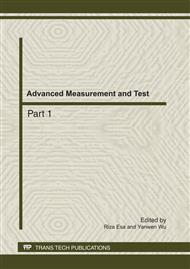p.1208
p.1214
p.1220
p.1226
p.1231
p.1237
p.1243
p.1249
p.1254
Research and Application of Moore’s Time-Varying Loudness Model
Abstract:
Loudness is one of the most important parameters of psychoacoustics. In the past, most loudness models were applicable only to steady sounds. However, most everyday sounds are time-varying. Moore and coworkers described a time-varying loudness model based on Moore’s Loudness model. In this paper, a detailed calculation of Moore’s time-varying loudness model is given. The model using the time waveform of a sound which is picked up by the microphone as its input is implemented in Visual C++. The results which are compared with LabVIEW and ANSI show that the system is feasible.
Info:
Periodical:
Pages:
1231-1236
Citation:
Online since:
July 2011
Authors:
Keywords:
Price:
Сopyright:
© 2011 Trans Tech Publications Ltd. All Rights Reserved
Share:
Citation:


